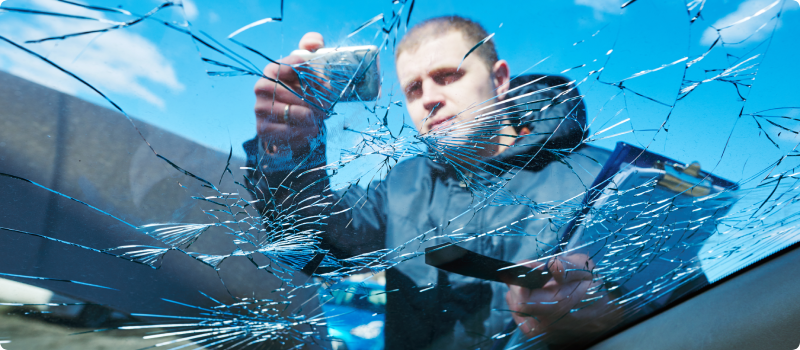My teen was in a car accident. Now what?
Updated March 8, 2024 . AmFam Team
Your teen calls and says they’ve been in a car accident. Now is your time to take a deep breath, calm them down and follow these steps to get through the next few minutes.
Call 911. Ask them first if there’s an injury. If there is, call 911. Even if no one is hurt, it’s still a smart idea to call as many areas legally require you to report accidents.
Get them to a safe place. Ask them if they’re able to drive the vehicle. If they are, have them slowly move out of any traffic. If they can’t move it, tell them not to try. If they’re hurt or can't get out of their car have them keep their seatbelt fastened. Make sure they turn on their hazard lights to stay as safe as possible.
Don't accept or place blame. Remind them not to admit fault or blame the other driver. However, do encourage them to ask the other driver and passengers if they’re injured.
Take photos. If they can, have them snap a photo of those involved, their license plates and any damage done to both or all cars. Also take photos of the scene, the roads, traffic signs, and the direction each vehicle was traveling. It can be hard to remember these details even a few hours later.
Exchange information. If police aren’t being called, have them share their name, contact information and insurance company. Then ask them to get the same information. A great idea is to collect the other driver’s name from a driver’s license, and insurance company from their insurance card just to make sure they’re accurate. If they can, they should take a photo of these ID cards for their records. Remind them to never give out their social security number.
Take notes on their phone. Encourage them to capture as many details as they can, including:
- Year, make, model, color of the other car.
- Driver and passenger names, addresses and phone numbers.
- Exact location
- Your speed
- Date and time
- Weather conditions
- Time police arrived and their name and badge number
- Road conditions
- Witnesses (get names and contact info)
Call your insurance agent. The sooner your agent knows about the accident, the sooner they can help you get your teen back on the road safe and sound.
Get a copy of the accident report. Make sure it includes the officer's name and contact information. His or her report will be useful if the accident goes to court.
Call a tow truck. If your teen’s vehicle is unsafe to drive, call a tow truck and have a professional mechanic fully check out the car.

After they leave the scene
Set the stage. Explain to your teen that your insurance company will handle the matter with the other driver and their insurance company. They don’t need to take any action and shouldn’t without your input.
Be proactive. You may want to be on any calls your teen might have with your insurance company. Some questions are new to teens and you want to make sure the information they provide is accurate.
Put down the pen. Don’t sign paperwork (or let them sign paperwork) from the other individual’s attorney or insurance company. Your insurance company will handle this matter for you.
Decide if you need an attorney. Contact one if you believe it’s needed.
Check in. See how your teen feels and how you can help them get back to normal. Getting in an accident can be scary, and they need your support now more than ever.
File a claim. Help your teen file a claim to report the accident. Submitting the claim online is easy and should only take minutes depending on the incident.
A fantastic way to reduce the stress you and your child may experience at an accident is to have a dry run when they first learn to drive. Go through all of the steps listed above and act them out in a mock situation. This way if they ever find themselves in an accident it’s not completely new and scary and they already know how to respond. You and your teen driver can also read up on more car accident tips and related articles here.
Of course, the best way to prepare your teen for a car accident is to teach them how to avoid one in the first place. Moreover, signing your teen up for one of our usage-based driving programs may help them master safe driving habits. You may like the app so much that you use it to improve your driving skills, too.
This article is for informational purposes only and includes information widely available through different sources.

